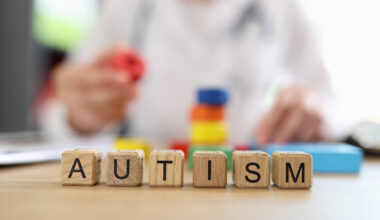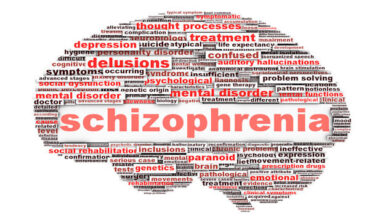In my years as a therapist for this group of people, I’ve discovered that whether mild or severe, autism is not a sickness or illness. It is just a neurodevelopmental disorder that affects people in various ways. It is accompanied by a variety of signs that can help in the diagnosis of this condition. These signs indicate that a person is autistic, however, simply being aware of the signs and symptoms of autism is not enough. In this post, I will discuss some of the signs of mild autism as well as practical treatment options so that you can assist someone who you suspect to be suffering from the condition.
Key Takeaways
- Mild autism is also known as high-functioning autism or Level 1 autism spectrum disorder (ASD) characterized by relatively subtle but notable challenges with behavior, social communication, and interaction.
- Some common characteristics of mild autism include difficulty understanding social cues, such as facial expressions, tone of voice, and body language, difficulty understanding and appropriately using gestures or nonverbal communication cues, and intense focus on specific topics or hobbies, often with deep knowledge and expertise in these areas.
- With the right support and treatments, people both kids and adults with mild autism spectrum disorder (ASD) which is sometimes referred to as high-functioning autism or Level 1 ASD, can enjoy happy, purposeful lives.
- Applied behavior analysis, speech and language therapy, cognitive behavioral therapy treatments, and a few other practical treatments are often combined in approaches to treating mild autism in adults or children.
Understanding Mild Autism Spectrum Disorder

First of all, what is autism? Autism, as previously said, is a disorder that is characterized by difficulties in social communication, repetitive activities, and sensory sensitivities. It might be minor or severe, depending on the signs or symptoms detected in an individual.
What Is Mild Autism?
In clinical terminology, mild autism is also known as high-functioning autism or Level 1 autism spectrum disorder (ASD) characterized by relatively subtle but notable challenges with behavior, social communication, and interaction. Mild autism may be accompanied by limited and repetitive activities and relatively mild social communication and engagement difficulties. Although they might experience problems in some areas, they could also possess skills and qualities that enhance their general growth and well-being.
Characteristics of Mild Autism
It is important to note that, while the term “mild” is used, it does not reduce the severity of the challenges that people with mild autism may encounter. Each person’s experience with autism is unique, and the label “mild” just relates to the level of help necessary, not the impact on an individual’s life. It takes early detection, tailored care, and understanding of each person’s needs to help people with mild autism flourish. Here are some common characteristics of mild autism:
Social Challenges:
- Difficulty understanding social cues, such as facial expressions, tone of voice, and body language.
- Challenges in making and maintaining friendships or relationships.
- Limited interest in or understanding of social norms and expectations.
- Preference for solitude or solitary activities over social interactions.
Communication Differences:
- Speech that may be formal, verbose, or overly precise, particularly in topics of interest.
- Difficulty with conversational skills, such as taking turns, staying on topic, or understanding non-literal language (e.g., sarcasm, idioms).
- Use of repetitive language or scripts in social interactions.
- Difficulty understanding and appropriately using gestures or nonverbal communication cues.
Restricted Interests and Repetitive Behaviors:
- Intense focus on specific topics or hobbies, often with deep knowledge and expertise in these areas.
- Adherence to routines and rituals, becoming distressed if routines are disrupted.
- Engaging in repetitive behaviors or movements, such as hand-flapping, rocking, or spinning objects.
- Sensory sensitivities, such as being hyper or hypo-sensitive to sensory stimuli like lights, sounds, textures, or smells.
Cognitive and Learning Patterns:
- Varied cognitive abilities, with some individuals demonstrating strengths in areas like pattern recognition, memory, or attention to detail.
- Challenges with executive functioning skills, such as organization, planning, time management, and flexible thinking.
- Uneven academic performance, with strengths in certain subjects and difficulties in others, particularly those requiring social or abstract reasoning skills.
Emotional Regulation:
- Difficulty understanding and expressing emotions, leading to challenges in empathy and social reciprocity.
- Heightened anxiety or stress in unfamiliar or unpredictable situations.
- Coping mechanisms such as stimming (self-stimulatory behaviors) or routines to manage sensory and emotional experiences.
Signs and Symptoms of Mild Autism

While persons with mild autism may not have as many obvious challenges as those with severe autism, there are still significant challenges that shouldn’t be overlooked. These signs and symptoms determine if a person’s challenge is severe or mild. Recognizing these signs allows therapists to provide support appropriate for the intensity of the difficulty. The following are some of the indications and symptoms you should watch out for:
Social Challenges:
Communication challenges in social situations are one of the main signs of moderate autism. It might be difficult for people with mild autism to recognize and make efficient use of both verbal and nonverbal cues. They could even find it difficult to keep eye contact, pick up on social cues, and converse reciprocally. Additionally, they could struggle to decipher tone of voice, body language, and facial emotions. These challenges may hinder their capacity to build and sustain lasting relationships.
Restricted Interests and Repetitive Behaviors:
Repetitive actions and narrow interests are two other traits common to people with mild autism. People with mild autism might make repeated motions with their hands, like flapping them back and forth. Additionally, they could exhibit a strict commitment to rituals and routines and can get upset if these are interrupted. Furthermore, they could have an aversion to change and develop strong interests in particular subjects or items.
Sensory Sensitivities
People with moderate autism often exhibit heightened sensitivity to sensory stimuli such as lights, sounds, textures, and odors. They also tend to react intensely or feel overwhelmed by sensory input, resulting in avoidance or seeking out certain sensory experiences for comfort.
Cognitive and Learning Patterns:
Usually, persons with this issue struggle with varied cognitive abilities, with strengths in areas like pattern recognition, memory, or attention to detail. They could also deal with challenges with executive functioning skills, such as organization, planning, time management, and flexibility in thinking. In addition, they have uneven academic performance, excelling in certain subjects while struggling in others, particularly those requiring social or abstract reasoning skills.
Emotional Regulation:
Though this group of people may be on the milder end of this challenge, they could still struggle with difficulty understanding and expressing emotions, leading to challenges in empathy and social reciprocity. They could also experience heightened anxiety or stress in unfamiliar or unpredictable situations. So, in order to manage their sensory and emotional experiences, they employ coping mechanisms like stimming (self-stimulatory behaviors) or following routines.
These signs and symptoms can vary in intensity and presentation among people with mild autism, highlighting the importance of personalized assessment and support tailored to each person’s unique needs. Early identification and intervention can significantly improve outcomes and help individuals with mild autism thrive in various aspects of life.
Can a Child With Mild Autism Spectrum Disorder Live a Normal Life?

Why not though? It’s not a disease as I’d always say. So yes, with the right support and treatments, people both kids and adults with mild autism spectrum disorder (ASD) that’s sometimes referred to as high-functioning autism or Level 1 ASD, can enjoy happy, purposeful lives. You need to understand that “normal” can be a relative term and that everyone has a very different idea of what a fulfilling life is. Hence, people with mild autism can reach their full potential and succeed in different areas of their lives with early detection, specialized interventions, and family, school, and therapist support. More so, It’s essential to approach each child with mild autism as an individual with unique strengths, challenges, and goals.
What Does Level 1 Autism Look Like?

Out of the three recognized degrees of autism, type 1 autism is the most severe. Compared to level 2 and level 3, level 1 autism is seen to be the “mildest” form of ASD, with symptoms that do not significantly interfere with an individual’s daily life. Level 1 autism is characterized by behavior, speech, and social relationship difficulties. When compared to children with level 3 autism, children with level 1 autism usually have milder symptoms and require less assistance with daily activities. They still have trouble, though, with things like reading nonverbal cues and adjusting to schedule changes. Remember that every child with autism experiences different symptoms as autism is still a spectrum disorder.
The type of assistance and care that a person with autism will require is determined by the level assigned to an autism diagnosis. Particularly in educational settings, level 1 autism treatment will assist in addressing the symptoms and offer continuous support. What was formerly known as Asperger’s disorder would most likely now be classified as level 1 autism following the DSM-5’s recategorization of ASD in 2013.
How Is Autism Diagnosed at Level 1?
The first step in diagnosing autism is developmental monitoring. The monitoring process may involve your pediatrician, parents, siblings, caregivers, teachers, and other family members. According to the CDC, a diagnosis may be made as early as 18 months, therefore it’s important to keep an eye out for developmental milestones in order to determine whether early intervention is necessary.
When a person with an autistic child comes to me with a suspicion of autism, what I first do is initiate developmental screening. During this screening, I ask them questions about their child’s milestones, communication, and behavior. In this step, observations and questionnaires are very important as they can determine the type and level of support necessary to help the patient
Note that you don’t just conclude that your kid or whoever is autistic until they have undergone the monitoring process. Even after the monitoring process, you will need a specialist who will be able to identify if the child meets the criteria for an autism diagnosis. As soon as the diagnosis is completed, the parents are recommended assistance and treatment
A level 1 autism test will identify the type and level of support necessary to help the patient.
What Does Level 2 Autism Look Like?

Three acknowledged levels of autism are identified: level 1 is the mildest, level 2 is a little more severe, and level 3 is the most severe.
You may be curious about whether level 2 autism can be treated, what symptoms to anticipate, and what the outlook is for your child if they have been diagnosed with it.
Autism type 2, also referred to as level 2 autism, is a neurodevelopmental disease that impacts a person’s behavior and communication. They have poor social communication skills, strange social mannerisms, and even the tendency to leave a conversation in the middle. They could also feel stressed when faced with change or transition. A lot of people with type 2 autism require additional help at home or in school.
The symptoms of autism level 2 in males and girls can differ, as they do in other forms of autism. Girls with autism have a tendency to hide their symptoms better by acting like their neurotypical peers, and they may also seem more adept at interacting with others.
How Is Autism Diagnosed at Level 2?
Level 2 autism is a more severe type of autism than level 1 autism. Hence, there are different ways to diagnose that a person deals with autism level 2. The assessment process is a bit more severe than that of Level 1
Level 2 autism diagnosis begins with monitoring developmental milestones early on. Early visits to a pediatrician will help for prompt and early monitoring of autism in your kid. However, It is also important that parents, family members, and childcare workers pay attention to the different stages of development in the kid.
Let’s say your child is displaying developmental regression or delays, it could be necessary to have them screened for autism. During this screening, your pediatrician will inquire about your child’s behavior, communication abilities, and significant developmental growth. If an autism screening looks plausible, you might be referred for an autism evaluation.
Evaluation for autism involves detailed developmental history and child observations. Additionally, a primary diagnosis of selective mutism, anxiety disorders, or ADHD should be checked by a specialist. Doing this is required to determine whether the child meets the DSM-5 criteria for an autism diagnosis. Occasionally, the child might be recommended for an extra assessment to check for any further genetic diseases, other neurodevelopmental disorders, or coexisting medical conditions.
Practical Treatments for Mild Autism

Currently, there is no cure for autism spectrum condition or a universally effective treatment. The purpose of treatment is to minimize symptoms of autism spectrum condition and enhance learning and development in order to maximize functional abilities. The following practical treatments are often combined in approaches to treating mild autism in adults or children. These treatments are tailored to the individual’s unique strengths, challenges, and needs.
Applied Behavior Analysis (ABA):
ABA therapy is a structured and evidence-based approach that focuses on improving specific behaviors and skills. It involves breaking down tasks into smaller steps, using positive reinforcement, and teaching new skills through repetition and practice. ABA can target social skills, communication, adaptive behaviors, and academic skills.
Social Skills Training:
Social skills interventions help children with autism learn and practice social interactions, communication strategies, and social cues. This may include role-playing scenarios, using visual supports (e.g., social stories, visual schedules), and participating in group activities to enhance social understanding and peer relationships.
Speech and Language Therapy:
Speech-language therapy targets communication challenges, such as improving expressive and receptive language skills, enhancing conversational abilities, addressing nonverbal communication (e.g., gestures, body language), and building pragmatic language skills (e.g., understanding social rules and context).
Cognitive-Behavioral Therapy (CBT):
CBT techniques can be beneficial for addressing anxiety, stress, emotional regulation difficulties, and challenging behaviors in children with mild autism. CBT helps children identify and manage emotions, develop coping strategies, and modify negative thought patterns and behaviors.
Parent Training and Support:
Providing education, training, and support to parents/caregivers is crucial in implementing interventions at home and promoting consistency across settings. Parent training programs teach strategies for managing behaviors, fostering communication, and supporting social skills development.
Monitoring Progress and Adjusting Interventions:
Regularly monitoring the child’s progress, evaluating the effectiveness of interventions, and making adjustments based on their evolving needs and goals are essential. Collaboration among healthcare professionals, educators, therapists, and caregivers ensures a holistic and coordinated approach to treatment.
Conclusion
Although dealing with mild autism comes with its own set of difficulties, people can enjoy happy, purposeful lives with the necessary resources and assistance. Also, we can make the world more accommodating for people with mild autism by encouraging empathy, and understanding, and providing them with the necessary services and resources. It is our collective duty as individuals to ensure that people with mild autism receive the assistance they need to reach their full potential.






